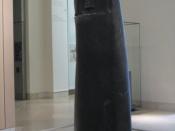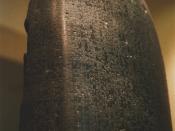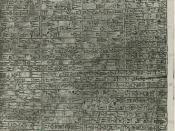Hammurabi took a weak kingdom and changed it into an empire, which was known as the Old Babylonian Empire. He built on model of past centuries and past rulers to help him in his transformation. He selected a ruler-god named Marduk to oversee his empire. Hammurabi used religion and the Code of Hammurabi to keep his society together. These laws were to help future judges and governors with their rulings. He believed that he was chosen by the Gods to deliver these laws to the people of the land. Hammurabi justified his political practices by stating that he did it in the name of God.
The Babylonian Society was structured into three classes. The Amelu were the free upper class; wealthy people. This class consisted of temple priests, high-ranking military officers, palace officials, and rich merchants that controlled large properties. The Muskinu were the free middle class. They were dependents of the palace or had to lease land from the Amelu class.
The Muskinu class was made up of artisans and laborers, small scale farmers and merchants, and the minor political and religious officials. These two classes wore their hair and beard long. The Ardu or slaves were the lowest class. The Ardu class had to shave their heads and they were branded. This was to distinguish the Ardu class from the Amelu and the Muskinu classes. Slaves were obtained through trade, captured in war, or they were free people who had been punished for a certain offense or they had become a slave out of a dept. Under the Code of Hammurabi, if anyone was to harbor or help a slaves attempt to runaway that person would be punished by death. (The Code of Hammurabi; 15). Slaves were able to gain property and to borrow as...


